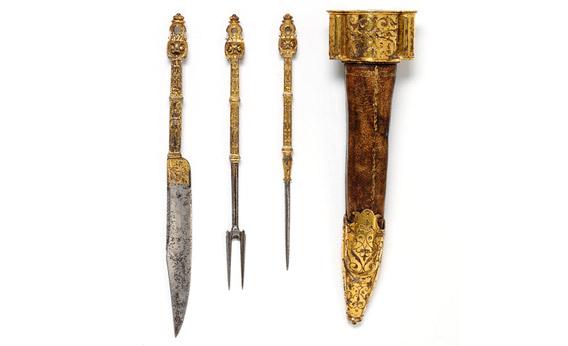
The Pesach Seder ends, as everyone knows, with the song "Chad Gadya" - "One Kid". The song begins with a pet goat, and ends with the death of the Angel of Death. Along the way almost everything else gets eaten, killed or injured (or drunk). Life is tough in this song.
One of the lines that I was always perplexed about is:
וְאָתָא שׁוּנְרָא, וְאָכְלָה לְגַּדְיָא
The cat came, and ate the goat,
Now I've seen many goats, even newborn ones, and I've seen many cats. But I don't think I've ever seen a cat that could devour a kid worth 2 zuz.
I was thinking about that when I came across this Gemara which speaks of a cat biting the hand of a newborn baby:
Talmud Bava Kama 80b
Meanwhile a cat had come along and bitten off the hand of the child.
Wow! That is some cat. That terrible incident led Rav to teach a set of halakhot about cats:
Rab thereupon went out and declared in his discourse: 'It is permissible to kill a cat, and it is in fact a sin to keep it, and the law of robbery does not apply to it, nor that of returning a lost object to its owner.' Since you have stated that it is permissible to kill it, why again state that it is a sin to keep it? — You might perhaps think that though it is permissible to kill it, there is still no sin committed in keeping it; we are therefore told [that this is not so]. I could still ask: Since you have said that the law of robbery does not apply to it, why again state that the law of returning a lost object to its owner does not apply to it? — Said Rabina: This refers to the skin of the cat [where it was found dead]. An objection was raised [from the following]: R. Simeon b. Eleazar says: It is permissible to breed village dogs, cats, apes and porcupines, as these help to keep the house clean. [Does this not prove that it is permissible to breed cats?] — There is, however, no contradiction, as the latter teaching refers to black cats, whereas the former deals with white ones. But was not the mischief in the case of Rab done by a black cat? — In that case it was indeed a black cat, but it was the offspring of a white one. But is not this the very case about which Rabina raised a question? For Rabina asked: What should be the law in the case of a black cat which is the offspring of a white one? — The problem raised by Rabina was where the black was the offspring of a white one which was in its turn a descendant of a black cat, whereas the accident in the case of Rab occurred through a black cat which was the offspring of a white one that was similarly the offspring of a white cat.
Hang on a second. Black cats and white cats? And most unusually, the black cats are the good ones!
Steinsaltz writes the following note:
The distinction between various cats is not dependent on their skin color per se, but on the different types of cat. In the talmudic period cats were not yet fully domesticated; they were either completely wild or kept in homes. White, or pale, cats were apparently genetically closer to wilderness cats, perhaps Felis libyca or Felis caracal. Therefore Rav declared that these cats should be considered animals of prey for all purposes. Even a black cat born from a white parent, a hybrid, was considered dangerous due the characteristics inherited from its wild ancestors.
Modern domestic cats are possibly descended from a creature similar to this:

Felis Libyca
I could imagine that being quite nasty.
So this piece of Gemara gives us an insight into the domestication of cats that was going on at that time. And shows what life was like when some cats were domesticated and some were not.
We sometimes forget that the Talmud was actually real people living in the real world. I find this an interesting insight into the lives of the Amora'im.
So is it possible that the "cat" of the Hagadda was actuallyl a wild cat, a Feils libyca? The song uses the word "shunra" which is the same Aramaic word as used in this piece of Talmud, rather than the Hebrew word chatul. Even though most of Chad Gadya is written in Aramaic, some of the words (e.g. the word for "slaughterer") are in Hebrew, so perhaps that is a hint. Also, perhaps a cat eating a kid shows that the song is also dated back to the time when cats were not yet domesticated.
However, unfortunately, that is not the case. Chad Gadya is not an "ancient" song and does not date back to Bavel. According to On The Mainline (and other sources) Chad Gadya began life as a German nursery rhyme, which was then translated into Aramaic/Hebrew and entered the seder some time in the 15th or 16th century, perhaps to signal to the children that it was time to go to bed. Or perhaps it was a Yiddish nursery rhyme which entered German culture. And apparently at one point it was a mouse that ate the goat, and then the cat ate the mouse. As Terry Pratchett would have written: SQUEAK!
To be honest, this entire post was really just an excuse to direct you to that link from Mainline, and to provide a chance to think about the Seder night.

